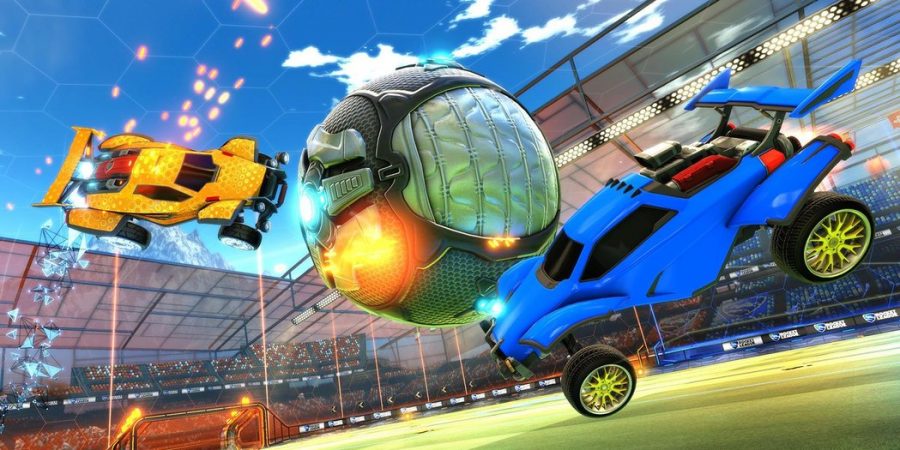Rocketing into Popularity
Photo Credit: Red Bull’s official website
An ‘Octane’ and ‘Octane’ playing competing to win possession.
January 11, 2019
On July 7th, 2015, Psyonix Studios released their new video game, Rocket League. A sequel to the game Super Acrobatic Rocket Powered Battle Cars, Rocket League brought together a perfect mesh of Soccer and rocket powered cars. While the game has made a slow entrance into the world of eSports, it continues to rise in popularity and viewership.
Rocket League is rather simple to the naked eye. The field has two goals, boost pads scattered around the field, and three players on either end of the field. The two teams that will play each game are called the orange and blue teams. Together, the three men per team will compete to push a ball that starts in the center of the field towards the open net belonging to the opposite team. Whoever ends the game with the most goals after a five minute game timer wins the game.
Rocket League on average pulls in three to four thousand viewers at a time on Twitch.tv, making it the 43rd most viewed game out of all video games and stream modes on Twitch. In addition to its daily load of viewers, Rocket League also runs the Rocket League Championship Series, which gets a grand total of nearly 200,000 viewers during the worlds tournament. This, and the one million dollar prize pool (which is due to rise later this year), makes the stakes very high for players of the game.
To some, it’s a wonder why a sports based game like Rocket League is having rising success similar to that of shooting games. The answer simply is that Rocket League is a viable game for multiple crowds. It sells on all platforms, for $20 (an easily attainable price for most children), and the micro-transactions have no impact on your game performance. Meaning, you can buy the game for $20 and never have to spend anymore money to “get good.”
On the opposite end, high stakes eSports, and especially shooters, tend to run a price around $60 just to play, and oftentimes more microtransactions follow. This is far too much to attract a younger crowd. Additionally, parents and adults feel more inclined to play, and let their children play, because of Rocket League’s non-violent playstyle.
Lots of video games are discouraged by parents and adults because of the often violent and sometimes brutal content. Games like Tom Clancy’s Rainbow Six Siege, and Fortnite Battle Royale, are excellent examples of this. Rocket League on the other hand is entirely a sport. It has zero violence what so ever, and is the definition of a G rated game.
Rocket League’s professional players are absolutely no joke. The difference between new players, and the full timers, is noticeable both visually and monetarily. Professional eSports athletes make an average of $50,000 a year on salary (but some make significantly more). In addition to the paycheck, pro players boast excellence in what are marked as the two pillars of successful playing. Rotations, and Consistency.
Rotations are key for constantly keeping up attacks and maintaining pressure. The pros have gotten to the point where making rotational mistakes never happens. New players will often bump into each other, or throw away possession (keeping the ball close to you so that you don’t give up control). Consistency is how often one hits the ball, in terms of how often they go for it. A player with low consistency would miss the ball a lot, where as the pros really don’t miss.
Due to Rocket League’s close relations to that of other sports, with its simplicity and intense high stakes gameplay, it has potential to become one of the most popular games in the world. It’s nonviolent playstyle makes it a good contender to younger and older crowds as well. Rocket League will continue to grow and become a major player in the advancement of the eSports movement.


